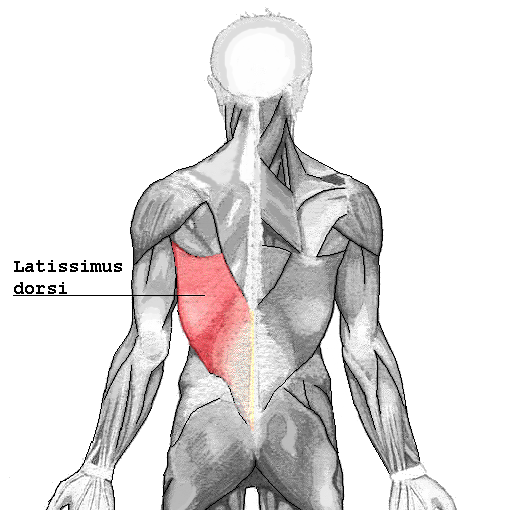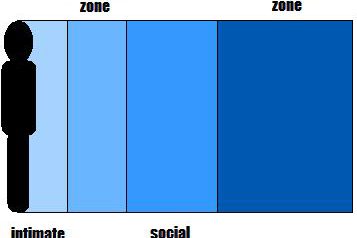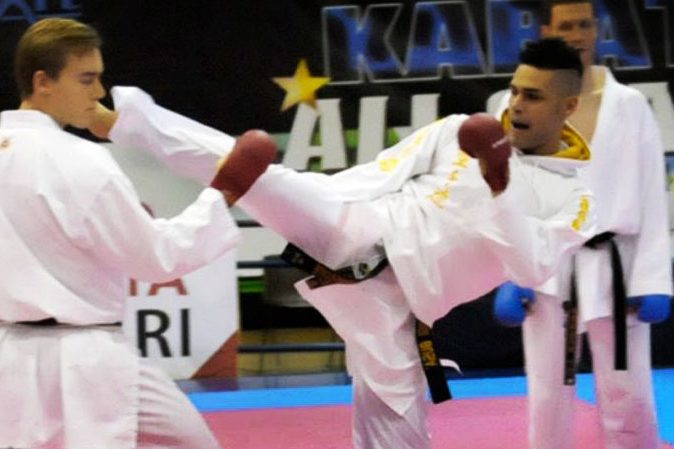Let’s talk about muscles.
We all have them.
Some have bigger ones, some have smaller ones. According to my top secret sources, there are approximately 640 muscles within the typical human being, give or take. That much is understood.
But what are they really useful for?
Seriously.
I mean, apart from making some of us *ahem* look good (at least when they’re pumped up to a certain degree), muscles only seem to be… trouble. That’s right. People complain about aching backs, bad knees, stiff shoulders and sore muscles all the time. Each day I hear a new complaint about this whole “muscle” thingy. In fact, sometimes it seems like we would be better off without muscles! Clearly, they do more harm than good! Also, the spelling is totally messed up, too.
Okay, joke over. Enuff.
I can’t keep it up anymore. Forget what I just wrote. Because… you know what?
Muscles rock.
I <3 MUSCLES.
Why? I’ll tell you why. Because muscles give you the ability to actually perform an absolutely amazing thing. A thing so utterly incredible that we all want to do it all the time:
Action.
You know, the thing that movie stars do in action movies.
Muscles are what make us move to the groove.
Muscles provide us with action.
And, today, I thought we would dig ourselves a bit deeper into one muscle in particular. One muscle that rules them all. One muscle that stands above all others when it comes to the groove of traditional Karate.
“What muscle is he talking about?”, you ask?
“The latissimus dorsi”, I reply.
Which is fancy ol’ language for ‘broadest muscle of the back’.
Because that’s what it is, simple and plain. The latissimus dorsi, better known as ‘latissimus’ or simply ‘lats’ (as we iron men call them) are the two biggest muscles of your back. They stretch to your sides too, however, but the majority of the muscle area is situated on your back. Left side and right side.
Here’s a quick pic for you reading-challenged dudes and dudettes:

And another shot from the side:

So what’s the deelio?
Why am I so enamored with this particular piece of meat?
Well, it’s pretty simple. The latissimus dorsi is what connects our lower body to our upper body when generating power and strength – which is crucial when it comes to stuff like executing real, raw, nasty Karate moves. You know, that kind of Karate where you actually hit real stuff and need some mass + stability behind your attack. And I know, I know, it’s becoming increasingly rarer these days, but some people still practise this kind of Karate now and then.
I believe they call themselves Karate Nerds…
The thing is, when you hit something; Newtons Third Law (“to every action there is always an equal and opposite reaction”) tells us that we are hit back with an equal amount of force. So my logical question to you is then; how are you going to handle that force? That re-action?
Huh?
Moreover, have you ever questioned why your sensei always tells you to keep your shoulders down when you’re punching? Or why he/she keeps poking at your ribs, trying to see if your lats are tense? Or keeps yelling “tuck your elbows in!” as you are getting sloppy with your technique? Or maybe your sensei is a traditional Okinawan/Japanese master, who punches and kicks you when you perform either Naihanchin (Tekki) or Sanchin kata (and all you can think is “why?!”)?
(Here’s two examples of that last part:)
My friend, here’s the kicker: There’s a reason for all of the above.
There’s an answer to all of your questions.
*drum roll please…*
It’s called “your lats”.
Thus, if you ask me, a basic understanding of the anatomy and kinesiology of the latissimus dorsi and its surrounding structures is über important to any serious Karate-ka no matter what style, branch or dojo you subscribe to (it also makes questions like the above much less intimidating).
Basically, the latissimus muscle has two main actions on your arm:
- It functions in adduction (pulling the arms to the sides of the body from an out-to-the-side position).
- And it functions in extension (pulling the arms down from a horizontal position straight out in front of the body).
So, what happens is the following: When the lats are properly contracted (through neat tricks like keeping your shoulders down, elbows in, armpits closed etc.) you are effectively tightening the link between your hips/legs (lower body half) and torso/arms (upper body half), meaning that the maximum amount of power/energy generated in your technique (punch or whatever) through your lower body is successfully transferred (minimum leakage) to your upper body and finally out through your fist into your target.
“BOOM!”
(Enemy’s brain explodes to pieces as you slam your fist through his nose bone.)
*bows gracefully to a puddle of meat*
As a trainer, if you have not already had to face these issues, it is merely a matter of time before you do. Understanding the lats, and how/why they function the way they do, is an important key to unlocking the treasure chest of awesome Karate.
Look… I don’t want to bore you any more than necessary, but you’ve probably seen it all the time: People at kata tournaments who seem to do all of their moves with their chest, elbows pointing to the sides as they punch, shoulders bouncing up and down like crazy. And you wonder “Omigosh, has nobody taught them that they have no actual power behind such a punch? That their body is not really connected to their fist? That they don’t have any significant amount of body mass behind their attack? That they would cry the second somebody put a real target in front of them?”
Well, the sad truth is… nothing of that really matters.
Because speed is of paramount importance, power isn’t, when it comes to looking good as opposed to being good (which lately is what any kata competition has come down to) and it is a fact that the fastest punch will always be the one that doesn’t need you to recruit every fibre of your very being (like, you know, for knocking somebody out ikken hissatsu-style).
So, when it comes to kata competitions, you can just throw an arm out there.
The ‘motor’ is your shoulder and tricep.
The power, then (or rather the illusion of power) is simply added on top as an aggressive hissing sound effect side dish, made deep down in the throat.
So, anyway, now you know both the reason for the emphasis on speed, the sound effects as well as the questionable effectiveness of techniques in most kata competitions/competitors.
But, as always, I digress.
Going back to Real Karate™ for the remainder of this post, let’s look at how the lats are trained. Because surely there’s more to it than just reading an awesome blog post, looking at videos of guys beating each other and giggling at people in Karate tournaments. Right?
Right.
You could, for instance, do some chin-ups. Great training for the lats. Or get a rowing machine and row away. Works those lats like nothing else! Or just position yourself under a bar and do some pulldowns. This will surely get you lats like Bruce Lee in no time (yup, there’s actually a reason he had those massive lats… he knew what they were used for…)

Or, you could do it the best way.
The way that people like Bruce Lee probably did it.
By training martial arts.
See, just like when it comes to many other muscles used in Karate, it is not so much about pure size or strength as it is knowing your body. Learning, and feeling, where and how to tense the correct muscles – whether it’s your lats, traps or gluts – for maximum effect in conjuction with a technique is the secret to eventually being able to successfully recruit your lats in any movement you wish. And the more you do it, the more you practise activating your lats in different situations, the stronger your lats will become even though you’re not lifting any actual weights!
Que?
Through the process of ‘synaptic facilitation’.
For those of you who are not neurogeeks, synaptic facilitllilialilintanation basically means that repetitive (kihon…) and quite intense (sweaty…) stimulation of a motoneuron increases the strength of its synaptic connections and may even form new synapses. Translated into English it means that multiple repetitions of a certain technique, where certain muscles are contracted, will ‘grease up’ this technique’s groove. More ‘juice’ will thus reach the muscle the more your body gets accustomed to the way its supposed to behave.
“So, eventually, the muscle will contract harder and faster?”
Bingo.
And that’s why we keep hearing tales about these old Karate masters who are said to be “immovable” or in some other way superhumanly strong, although they may look very ordinary (or even frail).
Because the power is on the inside.
Sure, some people call it “chi” or “ki” power.
(You know what I think about that.)
I just call it what it is.
Decades of steadily greasing the grove.
But, of course, mysterious powers acquired from a secret Zen monk living on a mountain in the jungle of Tibet is always easier to explain to the layman than “years of neuromuscular facilitation and motor neuron stimulation through highly repetitious Karate training.”
Anyhoo, whatever you choose to call it, your latissimus dorsi are there to help you through thick and thin.
Punches, blocks, throws, blows, locks, strikes… whatever.
Count on them. They’ll be there for you.
As long as you never forget them.
Lats last longest.
Now go train them!



20 Comments